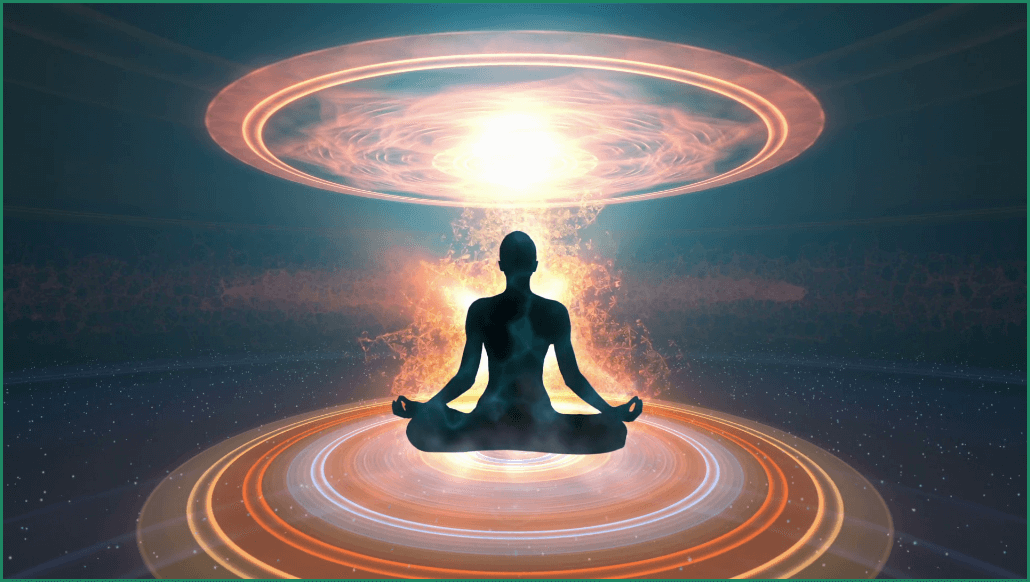In the realm of Hindu philosophy, the concepts of “Shanti” and “Moksha” stand as profound pillars that guide seekers on their spiritual voyage. Rooted in ancient wisdom, these concepts offer a roadmap to attaining inner tranquility and ultimate liberation. In this blog, we delve into the depths of Shanti and Moksha, uncovering their meanings, significance, and how one can embark on a transformative journey to discover these profound states of being.
Shanti :- Nurturing Inner Peace Amidst Chaos
The term “Shanti” may be simply translated as “peace”, yet its implications extend far beyond surface tranquility. Shanti encompasses a state of equilibrium that encompasses the mind, body, and spirit. It is the harmony that arises when thoughts, emotions, and actions are aligned. Hinduism emphasizes the significance of Shanti through the recitation of “Shanti mantras,” invoking peace for individuals and the world.
Finding Shanti entails cultivating self-awareness, mindfulness, and righteous living. By living in accordance with one’s true values, inner harmony is established, leading to a sense of peace that transcends external circumstances. Practices such as meditation, yoga, and selfless service (Karma Yoga) aid in the journey towards Shanti, preparing the ground for the pursuit of Moksha.
Moksha :- Liberation from the Cycle of Birth and Death
Moksha, often referred to as “liberation” or “salvation”, represents the pinnacle of spiritual evolution in Hinduism. It signifies release from the cycle of samsara (birth and death) and the unification of the individual soul (Atman) with the universal consciousness (Brahman). Moksha is the culmination of the spiritual journey, where the soul transcends worldly limitations to attain eternal bliss and freedom.
The paths to Moksha are diverse, recognizing the uniqueness of each individual’s spiritual journey. Karma Yoga (path of selfless action), Bhakti Yoga (path of devotion), and Jnana Yoga (path of knowledge) offer distinct routes to Moksha, all centered around self-realization and the dissolution of ego.
Navigating the Intersection
Shanti and Moksha share a profound interrelationship, with Shanti acting as a gateway to the realization of Moksha. Inner peace paves the way for self-discovery and transformation. In a state of tranquility, individuals can engage in self-inquiry and explore the depths of their being, an essential step toward attaining Moksha.
Furthermore, Moksha is the ultimate embodiment of Shanti. Liberation brings an end to suffering, desires, and attachments, resulting in an enduring state of peace that transcends worldly fluctuations. Moksha is the recognition of the innate harmony between the self and the universe, leading to eternal serenity.
Steps to Attain Shanti and Moksha
- Self-Awareness: Begin by cultivating self-awareness through practices like meditation and introspection. Understand your thoughts, emotions, and actions, and work towards aligning them with your inner values.
- Righteous Living: Embrace a life of integrity, empathy, and compassion. Engage in selfless service to foster a sense of interconnectedness with all beings.
- Spiritual Practices: Explore various spiritual practices, such as yoga, meditation, and mantra chanting, to calm the mind and nurture inner peace.
- Study and Reflection: Engage in the study of sacred texts and philosophical teachings to deepen your understanding of the self and the universe.
- Surrender and Letting Go: Release attachments and desires that bind you to the material world. Embrace a mindset of surrender to the greater cosmic order.
- Seek Guidance: Connect with spiritual mentors, teachers, or like-minded individuals who can offer guidance and support on your journey.
Shanti and Moksha, though distinct, are intertwined in the fabric of Hindu philosophy. The pursuit of Shanti lays the foundation for the voyage towards Moksha, guiding seekers toward self-discovery and inner transformation. As individuals navigate the complexities of existence, the harmonious interplay between these concepts offers solace and direction. By embracing Shanti and embarking on the journey to Moksha, one can attain a profound sense of inner peace and ultimate liberation, transcending the cycles of life and death to merge with the boundless ocean of universal consciousness.


Leave a Reply